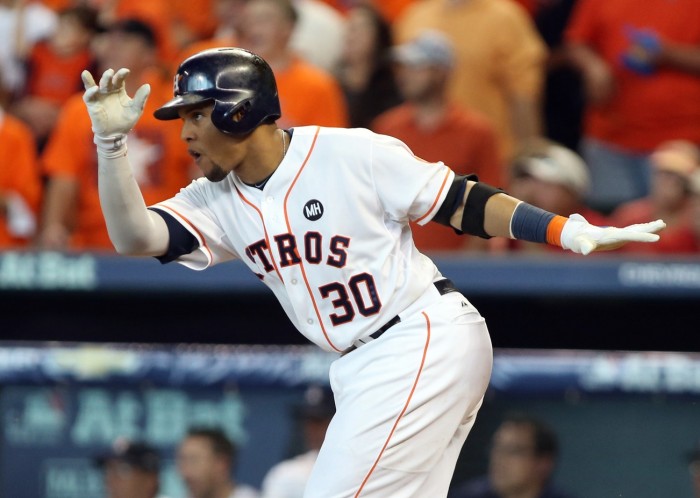The most significant Brewers storyline that involved an actual transaction was the trade deadline blockbuster that sent center fielder Carlos Gomez and right-hander Mike Fiers to Houston. After the Brewers’ deal with the Mets fell apart, Milwaukee shook hands with Houston and received a package of players headlined by top-100 prospect Brett Phillips. As our own J.P. Breen wrote at the time in his Transaction Analysis, this move signified “an explicit acknowledgement that the club’s window of contention has closed, and that they must reload for the future.”
Breen also wrote about what a trade of this sort meant for the farm system, and that is the key to this follow-up. The Gomez trade brought back more than just Phillips. Domingo Santana, Josh Hader, and Adrian Houser each looked promising to close out 2015. But more important than the performances of those individual players was what this trade indicated about the future of the franchise: They recognized they weren’t likely to compete in 2015 or 2016, so they worked to stock the farm system with as much talent as possible.
Importantly, though, the Brewers have continued to deal players that would help them in 2016 in the interest of securing their future. The November trade of Francisco Rodriguez brought back Javier Betancourt; while Betancourt probably won’t hit enough to be a star, he is still in the minor leagues and is under team control for at least six years—which shows the Brewers are in fact thinking about their next legitimate window of contention instead of holding onto Rodriguez in the arguably-worthless hopes that he would anchor their bullpen for one more year.
The subsequent Adam Lind and Jason Rogers trades signaled a similar philosophy. One can quibble with the returns—none of the five players the Brewers acquired in the deals is a sure thing—but they all appear to be solid prospects and, most importantly, are under team control for a long time. Lind and Rogers would probably have helped the team win a few more games in 2016, but kudos to the organization for recognizing that there isn’t much of a difference between 70 wins and 75 wins and instead shooting for much better in 2017 and beyond.
Gomez would probably have been the Brewers’ best player in 2016. Were he combined with Ryan Braun, Jonathan Lucroy, and Lind, the Brewers could have had a competent offense that got them a few extra wins this coming year. However, the organization wisely decided that they would be better off maximizing those veterans’ trade value, and the Gomez trade was the first indicator that they recognized this.
One interesting side note to this storyline is how the same philosophy has spanned multiple general managers. Doug Melvin made the Gomez trade in what was actually a bit of a surprise—general managers often try to save their job by maximizing current wins at the expense of future success in a phenomenon known as a moral hazard. Melvin, though, made a move that had the organization’s best interests at heart rather than his own before announcing he would be stepping down just two weeks after the deal. Then, new general manager David Stearns stepped in and immediately continued the trend. If I had to speculate about Melvin’s motivations, I would assume that he knew he would be transitioning out of the GM role even before he made the public announcement. Perhaps he understood this was the best jumping off point to a new regime in Milwaukee. Melvin wasn’t concerned with trying to save his job.
Alternatively, though, we could view this as a mandate from ownership saying that it was time to build for the future. I have written previously that I believe Mark Attanasio is a fantastic owner, and so I would not be surprised if he decided that the team needed to move forward and he directed Melvin to do so even before the new front office structure could be put in place. Either way, the Gomez trade signaled that the Brewers’ leadership group recognized that continually fighting for a few extra wins was a suboptimal strategy and that the best way to build a winner was to look to the future.
